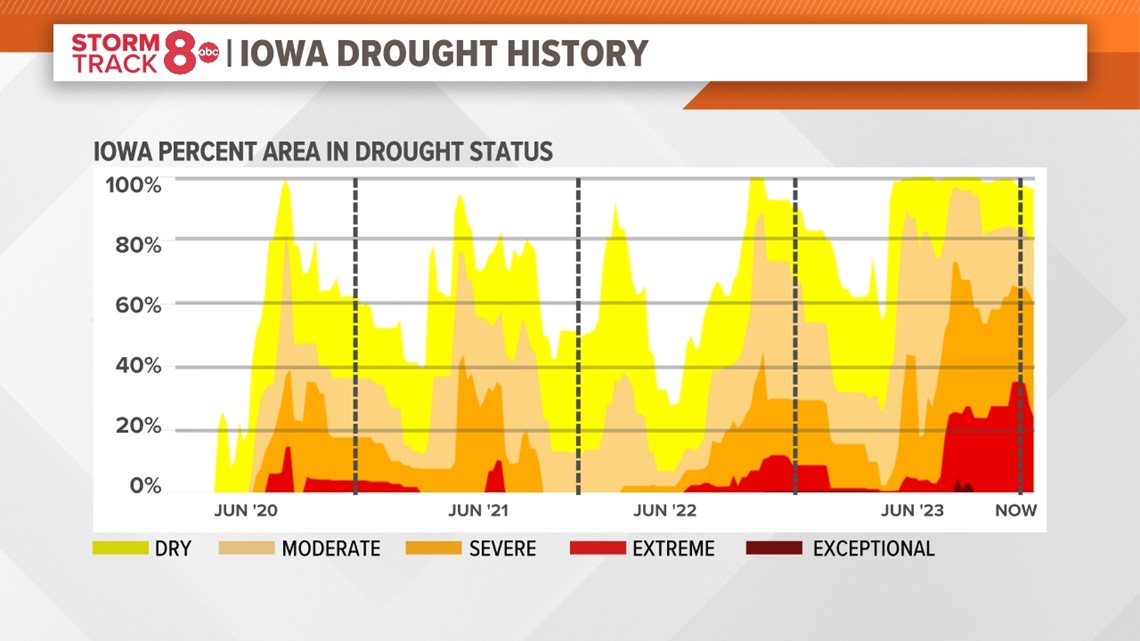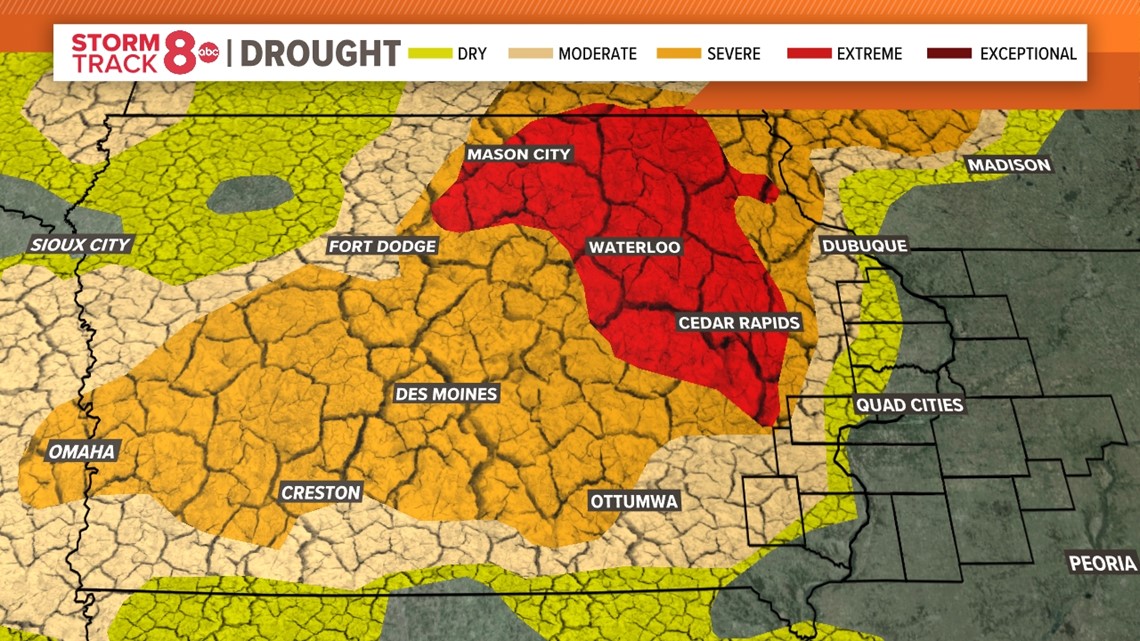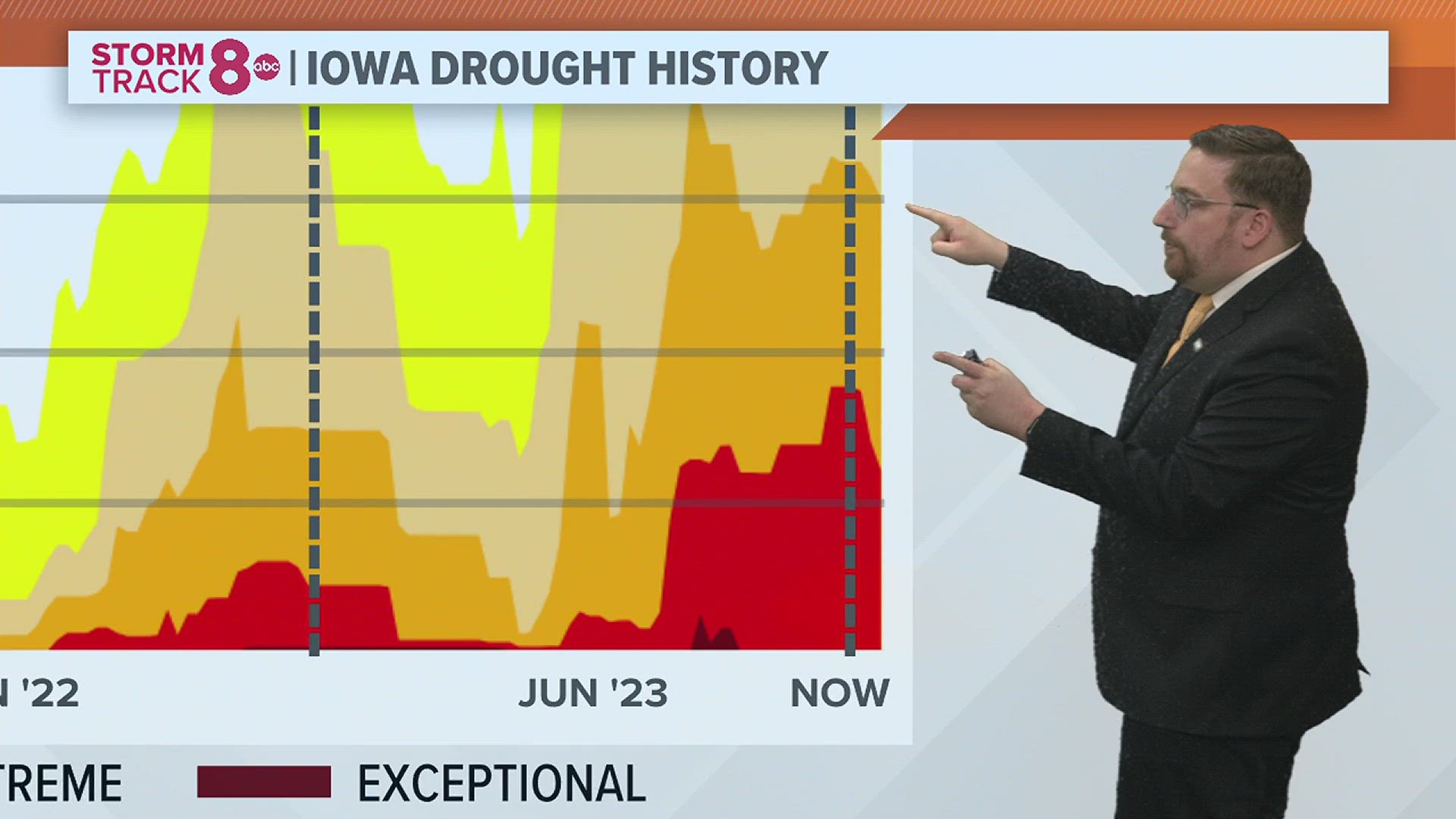MOLINE, Illinois — The first month of 2024 brought a variety of weather to the Midwest, including plentiful cold, snow and even rain. That active pattern has since moved on, but the impact it had on drought conditions, especially in Iowa, is just now finally being felt. Rhonda from Galesburg asked, "Has the recent snow and now rain had any significant impact on the drought?" Let's dive in!
How we measure drought
The U.S. Drought Monitor is produced through a partnership between the National Drought Mitigation Center at the University of Nebraska-Lincoln, the U.S. Department of Agriculture and NOAA. This monitor is updated every Thursday morning and gives us a snapshot of how bad drought conditions are across the country.
To determine drought intensity, researchers use different variables, including rain and snow, humidity, vegetation health, lake levels and even streamflows. Relying on several of these climate, weather and hydrology items gives us a better understanding of the bigger picture in terms of what is driving drought conditions and what's needed for them to improve. What's neat about this process is the large amount of hands-on work that is involved, it isn't just simply computers spitting out this map each week! A combination of researchers and forecasters team up to assess drought conditions each week.
Iowa's current drought goes back a ways
Drought conditions in Iowa with this current wave began back in the spring of 2020. By the time summer rolled around, nearly 20% of the state was in extreme drought, the second-to-worst level. Many parts of the state have remained in at least moderate drought from the summer of 2020 through the fall of 2021. By the summer of 2022, the drought really began to intensify again with 40% of the state covered in severe drought status.


The worst, though, has been in the last year, beginning with June 2023. This past fall, nearly 40% of the state was in extreme drought, especially central and northeast Iowa.
Recent rain and snow have helped
The latest drought monitor issued on Feb. 1 shows some positive developments. Thanks to the recent rain and snow, a few areas of the state have been removed from extreme drought status, including much of central Iowa.


On the Illinois side of the Mississippi River, drought continues to dissipate and as of right now, all of our Illinois hometowns are currently drought-free.
According to NOAA, 1-3 inches of rain is needed over four weeks to see a more dramatic improvement in drought conditions throughout Iowa. Some good news! The long-range outlook calls for above-normal precipitation through February.
Have a question that you would like me to answer for an upcoming Ask Andrew segment? Submit it, here!

